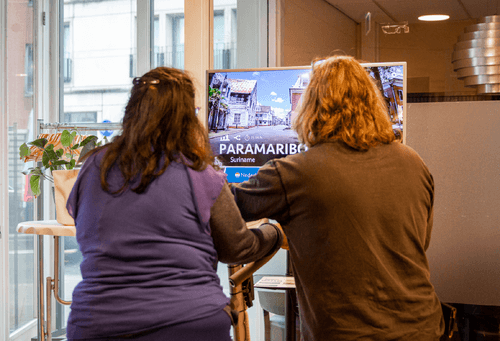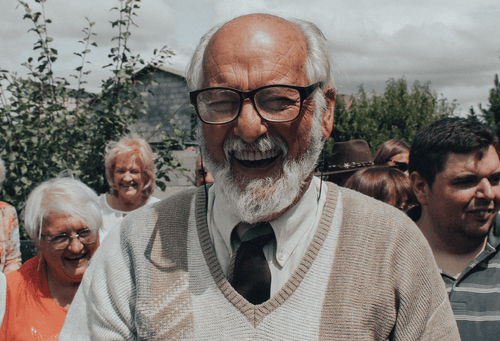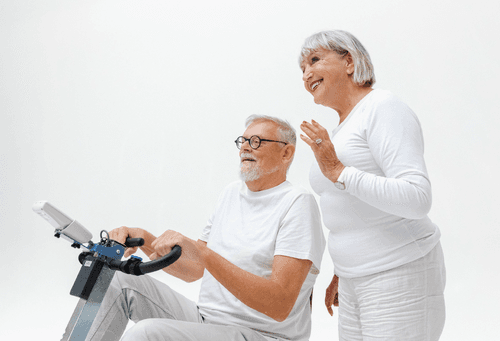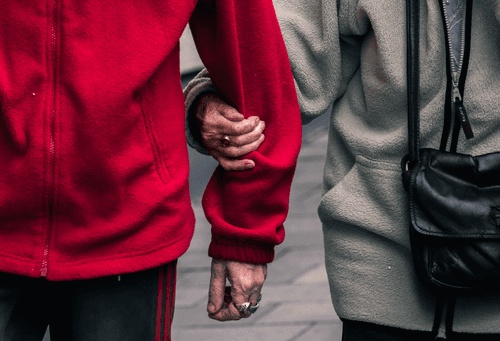Saving for Bike Labyrinth. Jenny tells how Rijnstate Dialysis Center is tackling this
Not everyone has a budget ready for healthcare innovations or new developments. That is why people often take action to save for a Bike Labyrinth, including Rijnstate, Molenkamp, Odion and Vrienden van Bernhoven. In the most creative ways, they dedicate themselves to their clients, from baking biscuits to crawling through the mud.
Do you ever wonder how these locations set up these kinds of campaigns or what you could do to save for a cool innovation, game or outing for clients? We asked our clients how they have raised money for a Bike Labyrinth in the past. They are happy to share their best tips and more.
Dialysis Center Rijnstate
We spoke to Jenny, a nurse at Rijnstate's dialysis department, about her experience saving for not one, but two Bike Labyrinths. In July 2020, they bought their first Bike Labyrinth thanks to their sponsorship project and recently they reached their second goal and made their patients happy with another Bike Labyrinth.
When Jenny saw a post about Bike Labyrinth on Facebook, she immediately knew it would be ideal for her patients to use during dialysis treatments. Patients are, on average, in bed for four hours, three times a week, for their dialysis treatments. Which means they are often tired, have less muscle strength and do not have the energy and time to exercise enough. Exercising during treatment is the solution. It makes the treatment more effective, blood pressure drops less, the patient suffers less cramping, less osteoporosis and feels fitter. In addition, cycling helps make time go by a little faster, cyclists enjoy new and familiar locations, and it provides distraction and relaxation.
Sponsorship project
To make this a reality, Jenny started working on a sponsorship project. Starting a project can seem difficult, but it doesn't have to be. They simply started by saving empty bottles for deposits. This allowed them to come up with a plan for recruiting sponsors in the meantime. During the pandemic, like many of us, Jenny could no longer play sports in the way she was used to. She really had to go for it: running, her least favorite sport, was one of the few options. So she started running with her neighbor. Before she realized it, she was running 16 km just like that. Then 21 km should also be possible! And that's how the idea of running the Enschede half marathon together with colleague Roy came about.
The plan is in place, now all we need are the sponsors. Friends and family were asked for a donation, but these are also the people who already mean a lot to patients. So Jenny took the plunge and called several companies: whether they wanted to sponsor in exchange for their logo on a banner, poster or in an article. Among other things, they received a donation of up to €500 and free walking route booklets from a travel agency. With these booklets, they in turn motivated patients and friends. Whoever shares the post on Facebook about the half marathon the most, will receive a route booklet as a gift. Truly every little bit helps!
In addition, Jenny and her colleagues also participated in the Weissensee in beautiful Bike Labyrinth jackets and Jenny ran another half marathon, but this time the Amsterdam one with her colleague Linda. Tip from Jenny: The Amsterdam marathon is highly recommended, everyone encourages you so you automatically start running faster.
In addition to sponsorships, Jenny also gives the tip to look at all your options. Can you sign up for a project from Rabobank or Unive, for example? They received as much as €10,000 from a project from the Rijnstate Vriendenfonds because they had already saved so much themselves. Thanks to projects like this, healthcare organizations that do not have a budget for extra innovations themselves also get the opportunity to purchase healthcare technologies.
On the move
Besides the sponsorship project, Jenny is also involved in the exercise project. Recently, the Rijnstate dialysis department has adopted a new approach. They no longer ask their patients whether they want to exercise, but what they would like to do during their dialysis treatments. This way, they find a suitable solution for everyone. They have dumbbells, elastic bands to do exercises with and Bike Labyrinth (which you can also cycle with from bed). This project puts the focus on the individual's interest, something that is very important to motivate exercise. They also use videos and additional explanations to show why exercise during dialysis is so important, to give people extra encouragement. During exercise, the physiotherapist can provide guidance and the arms and/or legs can be trained. Patients often do this during the first half-hour of dialysis treatment, as this works best. There are also group sessions to get into exercise together under supervision, which of course is also just very sociable.
Hopefully Jenny and her colleagues were able to inspire you or give you a good idea. Curious how other locations do this? The stories of other clients and their creative ways of saving will follow.







